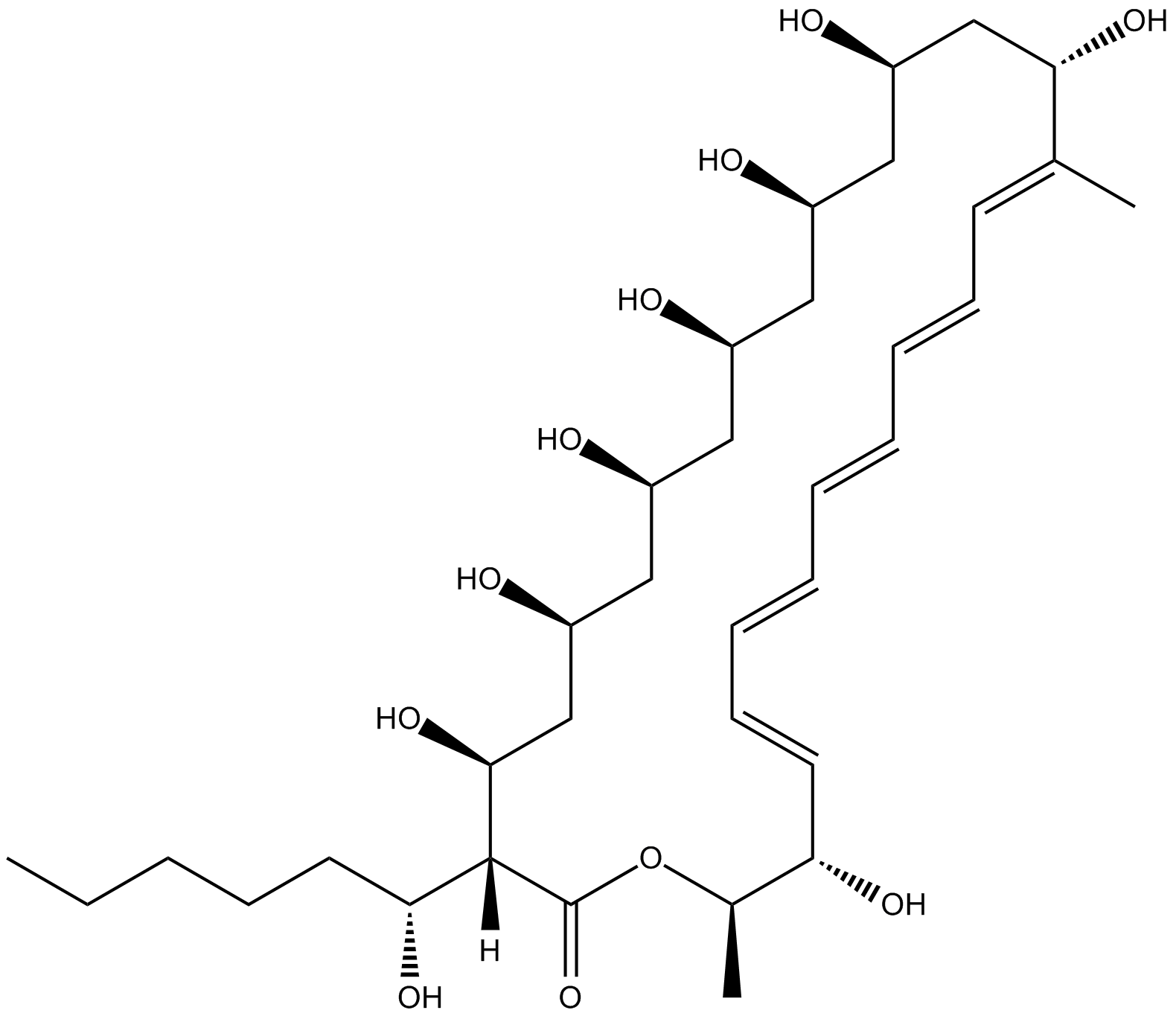Filipin III |
| Catalog No.GC12048 |
Fluorescing antibiotic used for the detection of lipoproteins
Products are for research use only. Not for human use. We do not sell to patients.

Cas No.: 480-49-9
Sample solution is provided at 25 µL, 10mM.
Cholesterol is both an important structural component of cell membranes and an early intermediate in hormone and bile acid biosynthesis. The localization and measurement of cholesterol in cells is therefore of great interest. Filipin is the collective name given to four isomeric polyene macrolides isolated from cultures of S. filipinensis; Filipin III is the predominant isomer and the one used in most studies. Filipin binds to cholesterol in membranes, forming ultrastructural aggregates and complexes which can be visualized by freeze-fracture electron microscopy.[1],[2] The binding of cholesterol also decreases the intrinsic fluorescence of Filipin, and this property has also been used to detect cholesterol in membrane fractions.[3]
Reference:
[1]. Castanho, M.A., Coutinho, A., and Prieto, M.J. Absorption and fluorescence spectra of polyene antibiotics in the presence of cholesterol J. Biol. Chem. 267(1), 204-209 (1992).
[2]. Miller, R.G. Mini Review. The use and abuse of filipin to localize cholesterol in membranes Cell Biol. Int. Rep. 8(7), 519-535 (1984).
[3]. Severs, N.J., and Robenek, H. Detection of microdomains in biomembranes. An appraisal of recent developments in freeze-fracture cytochemistry Biochimica et Biophysica Acta 737, 373-408 (1983)
Average Rating: 5 (Based on Reviews and 5 reference(s) in Google Scholar.)
GLPBIO products are for RESEARCH USE ONLY. Please make sure your review or question is research based.
Required fields are marked with *







